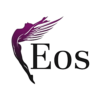Table of Contents
ToggleMaternity leave policies are a crucial aspect of workplace rights, serving as a cornerstone for supporting women’s health, well-being, and professional advancement. Across Asia, the landscape of maternity leave varies widely, reflecting cultural norms, legal frameworks, and socio-economic factors. While progress has been made in many countries to enhance maternity leave provisions, challenges persist, highlighting the ongoing struggle for gender equality in the region.
For the HR professionals and business leaders navigating these waters, understanding the nuances of maternity leave policies across different Asian countries is not just recommended; it’s essential for shaping sustainable and compassionate employment practices.
Maternity Leave Policies Across Key Asian Countries
A crucial aspect of any business endeavour in Asia is the understanding of local labour laws and statutory benefits, especially those concerning maternity leave.
Japan
Under Japanese law, women are entitled to maternity leave of up to 14 weeks, with an option to extend it further in case of complications during pregnancy or childbirth. Additionally, expectant mothers are eligible for prenatal leave, allowing them to take time off before their due date for medical appointments and rest. Moreover, Japan offers postnatal childcare leave, which allows parents to take additional time off to care for their newborns, typically up to one year after childbirth, with partial wage compensation provided through employment insurance.
Read more: The Different Work Leaves in Japan
China
China, in its bid to manage demographic trends and support working families, offers a maternity leave system that stands out for its generosity within the Asian context. Primarily, the standard duration of maternity leave is 98 days, including prenatal leave, with extensions available under specific circumstances, such as for late childbirths (women giving birth at the age of 24 or older) and multiple births. For each additional child in a multiple birth, the mother is entitled to an extra 15 days of leave.
Financially, the scenario is equally supportive; the government mandates that during maternity leave, women receive their full salary, which is funded through social insurance schemes that both the employer and employee contribute to. This policy framework not only underscores China’s commitment to supporting working mothers but also reflects a deliberate strategy to align workforce participation with broader socio-economic objectives, setting a significant precedent in the region.
India
India’s Maternity Benefit (Amendment) Act of 2017 represents a landmark shift towards more inclusive support for working mothers, setting a new standard for maternity benefits not just in India but globally. Under this amendment, the duration of paid maternity leave was extended from 12 to 26 weeks for women with fewer than two surviving children, positioning India among the nations with the most generous maternity leave policies worldwide. This provision is applicable to all establishments employing 10 or more people.
Furthermore, the amendment introduced a pioneering mandate for employers to provide creche facilities for mothers, enabling them to visit their child four times during the workday. This policy implementation not only reinforces India’s commitment to bolstering female participation in the workforce but also reflects an analytical, future-oriented approach to tackling the challenges of balancing professional development with family life. Through these progressive laws, India is navigating the complexities of modern workforce demands while addressing the critical need for supportive parental and particularly maternity policies
Singapore
Under Singapore’s progressive policies, eligible working mothers are entitled to 16 weeks of paid maternity leave if the child is a Singapore citizen and the mother has served her employer for a continuous period of at least 3 months before the birth. For non-citizens, or if the aforementioned criteria are not met, the entitlement is adjusted to 12 weeks, in alignment with the Employment Act. Additionally, the first eight weeks of leave for the first and second child are fully paid by the employer, while the government reimburses the latter eight weeks, up to a capped amount. For the third child and subsequent children, the government bears the cost of the full 16 weeks, subject to limitations.
This differentiated approach not only underlines Singapore’s commitment to supporting familial growth but also reflects a broader strategy to encourage higher birth rates among its citizens. The eligibility criterion, therefore, serves as a critical mechanism in reinforcing national demographic goals, while also ensuring that the workforce remains resilient and enriched with talent.
Philippines
Under the “Expanded Maternity Leave Law” implemented in 2019, working mothers in the Philippines are granted a substantial 105 days of paid leave for childbirth or miscarriage, a significant increase from the previous 60 days. This policy is inclusive, extending to every female worker, regardless of her civil status or employment type, marking a progressive step toward universal healthcare and employee welfare.
Additionally, the law provides an option to extend leave for an extra 30 days without pay, further emphasising the country’s recognition of the importance of postpartum recovery and child-rearing responsibilities. For solo parents, the law is even more generous, offering an additional 15 days of paid leave, bringing their total to 120 days.
The future-oriented policy not only supports the physical and mental health of the mother but also strengthens family bonds, contributing positively to the socio-economic fabric of the Philippines. This approach underscores a broader regional trend towards enhancing maternal welfare and workforce participation, highlighting the pivotal role of governmental policies in shaping a resilient and inclusive society.
South Korea
South Korea extends a relatively comprehensive maternity leave, offering 90 days of leave, with the government compensating for a significant portion of salary during this period. The first 45 days of leave are fully funded by the employer, while the remaining period is covered by employment insurance, ensuring that women have substantial financial support during this crucial time.
More strikingly, South Korea has augmented its maternity leave with parental leave, allowing either parent to take up to 18 months off with a capped salary from employment insurance, thus promoting shared childcare responsibilities and aiming to boost female workforce retention by not solely focusing on mothers. This policy reflects a pragmatic approach to addressing declining birth rates and the challenges of an ageing population, strategic issues that South Korea faces.
Vietnam
The Vietnamese Labor Code provides for a maternity leave period of six months (approximately 180 days), one of the longest durations in the Southeast Asian region. This generous provision reflects an acute awareness of the crucial early months of motherhood and child development, and is complemented by a 100% salary coverage during the leave period, financed through social insurance.
Furthermore, the Vietnamese policy offers additional protections and benefits for pregnant women, including prohibitions against dismissal and discrimination, showcasing a robust framework designed to secure women’s positions in the workforce while they fulfil their maternal duties.

Challenges Faced by Working Mothers in Asia
For female employees, the transition into motherhood presents an array of personal and professional challenges, especially in the context of Asian work environments.
Cultural Norms
The weight of cultural expectations and traditional gender roles can create unseen barriers for working mothers across Asia. Cultural expectations play a pivotal role in shaping the maternity leave experiences for mothers, particularly in Asian societies where traditional gender roles often prescribe women as the primary caregivers. This societal construct inadvertently pressures women to limit their career aspirations and professional growth in favour of family responsibilities.
Despite progressive policies aimed at promoting gender equality in the workplace, the ingrained cultural norms can dilute the effectiveness of these policies, leaving women to negotiate between their professional ambitions and societal expectations. The resultant effect is a heightened sense of guilt and conflict for working mothers, who face scrutiny for perceived neglect of family duties when pursuing career goals.
Additionally, these cultural expectations can influence the utilisation of paternity leave, often viewed as socially unacceptable or unnecessary, thereby reinforcing the gendered burden of childcare. The analytical dissection of this interplay between cultural expectations and maternity leave underscores a significant barrier to achieving true gender parity in the workforce and highlights a critical area for sociocultural reform.
Read more: Empowering Women in the Workplace: Striving for Equality
Workplace Biases
From subtle discrimination to outright exclusion, workplace biases can undermine the effectiveness of maternity leave policies. For instance, “Maternity Leave Stigma“ breeds the assumption that women will be less committed to their careers post-childbirth. This can lead to them being overlooked for promotions or challenging projects, under the false belief that their priorities have shifted away from their professional aspirations.
Another pervasive bias is the “Flexibility Bias,” where employees who utilise flexible working arrangements or part-time schedules to accommodate family responsibilities are perceived as less dedicated or serious about their careers. This perception can hinder their career advancement and contribute to a culturally ingrained reluctance to adopt flexible working practices across the board.
“Competency Bias” is yet another challenge, where women, upon returning from maternity leave, may face doubts regarding their competency, skill levels, and commitment to work. This can result in diminished opportunities for meaningful engagement in projects or strategic roles, effectively sidelining their professional growth and potential contributions to organisational success. Collectively, these biases nurture a workplace environment that not only limits women’s career trajectories but also perpetuates gender imbalances and affects overall workplace dynamics, stifling diversity, and innovation.
Best Practices for HR Professionals
It’s not enough to merely comply with maternity leave laws; the goal should be to create policies and environments that empower and support working mothers.
Designing Inclusive Maternity Leave Policies
A biased or one-size-fits-all approach to policy design can undo even the most generous benefits. In addressing the diverse needs of working mothers, a future-oriented, analytical approach is essential for HR professionals aiming to design inclusive maternity leave policies. The following framework outlines key considerations:
Comprehensive Needs Assessment
Begin with a thorough evaluation of employee needs through surveys, interviews, and focus groups. This assessment should extend beyond the immediate postpartum period to capture a wide range of circumstances, including prenatal care and postnatal support, acknowledging that family structures and needs are diverse.
Flexible Policy Structure
Develop policies that offer flexibility in terms of leave duration, part-time work options, and remote working opportunities. This acknowledges the varying degrees of support needed by different families and enables employees to tailor their return-to-work process to their unique situation.
Support Mechanisms
Incorporate support mechanisms such as phased return-to-work programs, mentorship for transitioning back into the workplace, and access to professional counselling services. These mechanisms can play a critical role in addressing the Competency Bias and facilitating a smoother reintegration into the workforce.
Continuous Feedback Loop
Establish a system for continuous feedback and policy adjustment to ensure that maternity leave policies remain responsive to the evolving needs of the workforce. This should include regular policy reviews and updates based on employee feedback, societal changes, and advancements in workplace practices.
Education and Awareness
Implement ongoing training programs for management and staff to foster an understanding of the challenges faced by working mothers and to promote a culture of support and inclusion. Education initiatives should aim to dismantle stereotypes and biases, equipping all employees with the knowledge to contribute to a supportive workplace environment.
By adopting this future-oriented, analytical, and inclusive framework, HR professionals can design maternity leave policies that not only comply with legal standards but also actively support and empower working mothers, ultimately contributing to a more equitable and innovative workplace.
Supporting Returning Mothers
The transition back into the workplace can be daunting for new mothers. HR support can make all the difference.
Flexible Work Arrangements
Offer a range of flexible working options to accommodate the diverse needs of returning mothers. This can include part-time schedules, telecommuting, job sharing, and flexible start and end times. Such arrangements allow mothers to balance their professional responsibilities with childcare needs, reducing stress and increasing job satisfaction.
Mentoring Programs
Establish a mentoring program specifically designed for returning mothers. Pairing them with colleagues who have successfully navigated the transition back into the workplace can provide invaluable support. These mentors can share insights, offer guidance on managing work-life balance, and serve as a sounding board for any concerns or challenges that arise.
Implementing these strategies signifies an organisation’s commitment to supporting its employees throughout significant life transitions. By doing so, companies not only enhance the well-being of their workforce but also position themselves as forward-thinking and supportive employers, attractive to top talent in an increasingly competitive labour market.
Conclusion
The dialogue around maternity leave in Asia is not just about social justice; it’s an economic imperative. By understanding, refining, and championing maternity policies, businesses in Asia can foster a more loyal, robust, and productive workforce that not only supports the individual worker but the collective future of the organisation. It’s time for HR professionals and business leaders to see the maternity leave paradigm in a new light— a beacon for equitable and sustainable growth.
With Eos Global Expansion robust EOR services, we can offer support and strategic partnership to organisations looking for guidance on their maternity leave policies across Asia. Connect with us for more information.
Featured photo by Anastasiia Chepinska on Unsplash







